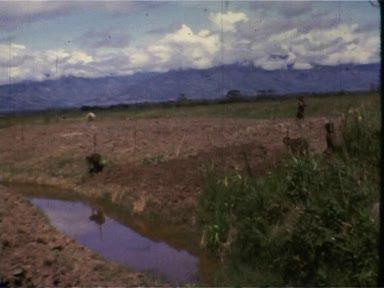

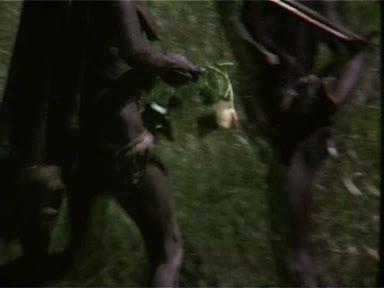

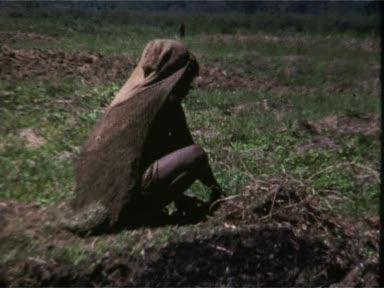

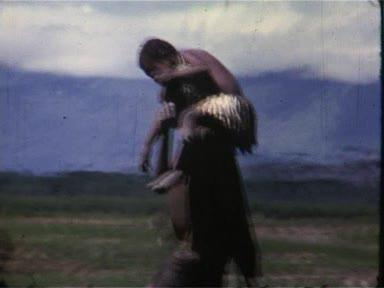

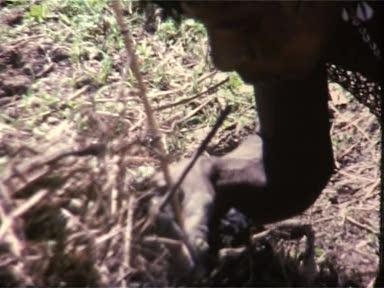

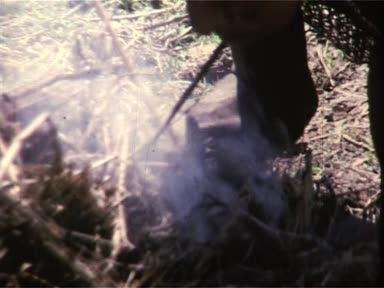

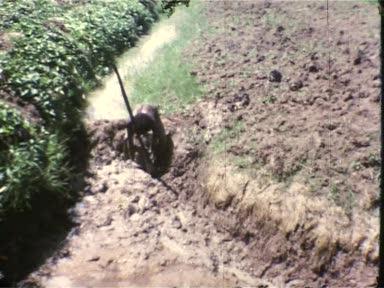

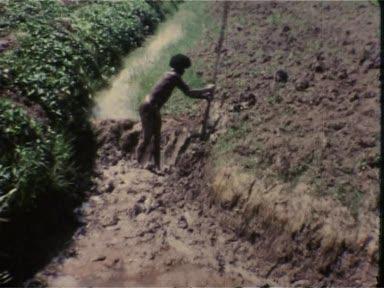

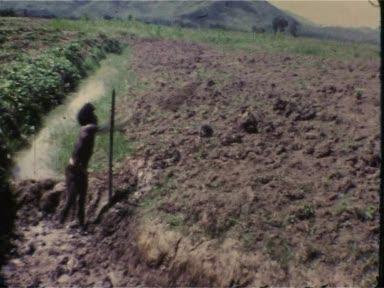

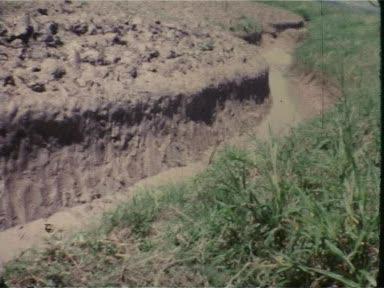

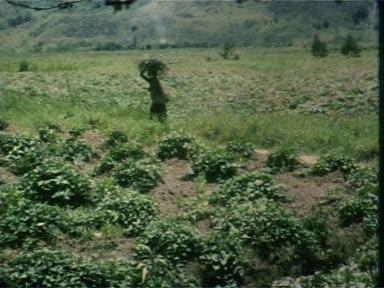

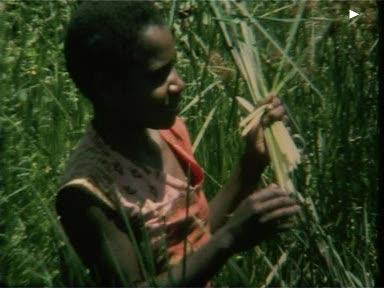

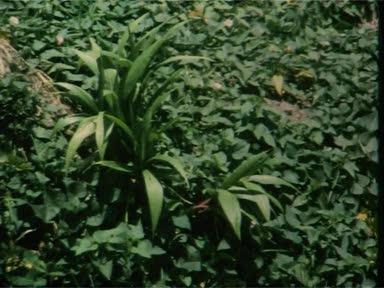

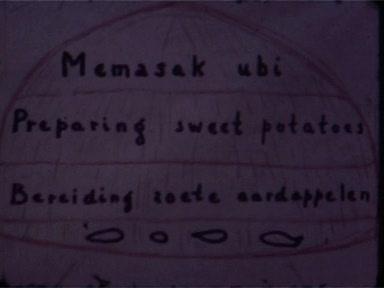

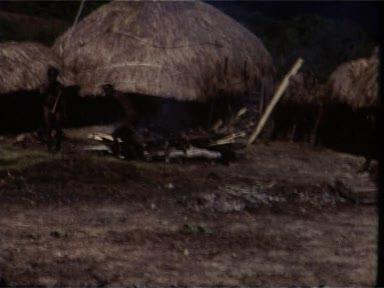

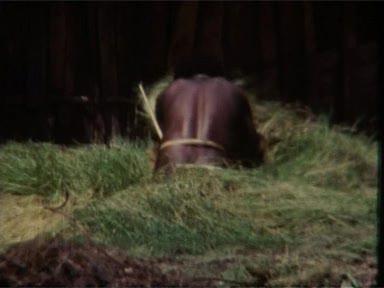

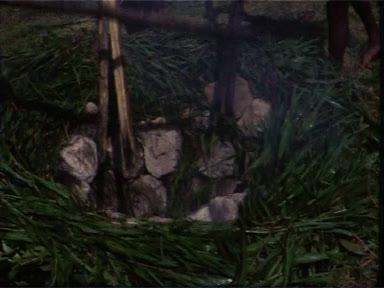

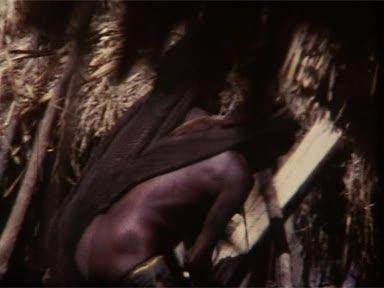



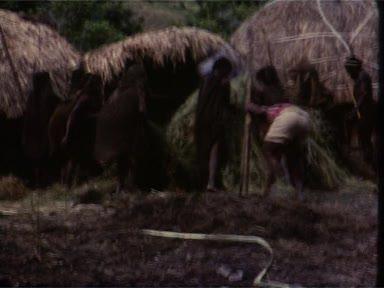

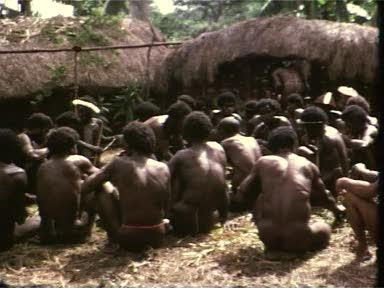



Wen Hagasin
Wen Hagasin
Objectcode
FI/40/18
Film by father Jules Camps OFM, recorded during the 1970s in the central mountain area of Irian Jaya. 'Wen Hagasin' outlines the basic sequence involved in gardening and agriculture trough the actual consumption of food grown and prepared by the people of the Baliem Valley. The film was prepared in the vicinity of Yiwika, in a local garden known as Akunmo and in the 'uma' or villages known as Salkagood and Lukhigin. The film is divided in two parts: garden work and food preparation.
Contents
Description: The first portion of the film depicts the steps involved in gardening from beginning through actual harvest of the garden fruit. The sequence begins with Logarek clearing the field of grass in the traditional way using only his hands, and in the acculturated manner of today, using the machete. The site of this activity is known as Akunmo. This grass is then piled up and burned by Weneke, assisted by her husband and children. The soil is broken by Aikron using the alo sege into large clumps of earth which are farther broken into finer particles by the women. This finer soil is then fashioned into small mounds into which will be planted the sweet potatoes leaves (hymperi eka), and vine. Two plants are usually placed in the ground as an insurance measure. A rest from work is usual, during which cigarettes are made and smoked. Pictured in the film is Kemugu preparing tobacco (hanom) for smoking. She first shapes a leaf into which she flakes tobacco from her roll with the thumbnail. Kemugu then folds her cigarette, place it into a hanom oak, and lights it to smoke. The next step in garden preparation depicted actually occurs prior to the planting and involves clearing the irrigation ditches. Kula is shown doing this activity which involves throwing the clumps of moist earth into the actual garden. This process provides the only fertilization added to the gardens. The tool used by Kula is the wen sege. The breaking up of the soil into finer particles is then shown again. After the garden has been planted, the women visit to weed and thin out the vines. The flowering stage of the plant occurs before the actual formation of the tuber. When the tubers are ready, they are dug out of the mounds, using the hymperi sege and the small hair roots are removed. Ompailek is shown filling her su with potatoes, the normal daily activity of women, which she will take to wash and scrape clean. A local grass called kilimi is eaten raw by the people. The first portion of the film is concluded with shots of some things grown by the people: hymperi (sweet potato), hanom (local tobacco), soa (a stem vegetable) and ham (taro). A mountain garden known as Jabula is shown in the distance for comparison to the valley floor gardens covered in the bulk of the film. People returning to the compounds following the day's work are also shown. The second division of the film deals with the actual preparation of food in the villages (uma). The film for this portion was taken in the uma known as Salkagook and Bukhigin. Shown in Salkagook, the uma of Hibingka, is Akubaga who is putting jeleakap into the bakte (steam pit), in which the hymperi is to steamed. Hymperi is prepared also by baking directly in the fire, but that is not shown here. Following the jeleakap, a layer of leaves (oika) is put into the pit. The steam pit is now filled with rocks (helinkit), which have been heated on the kit pelago. The rocks are carried to the pit using a partially split pole known as the hiliba. When the pit has been lined with the hot rocks, the potatoes are placed in the pit by the women, each having her own place. The importance of this placement is emphasized by a fight scene between Haloke and Salohe, both wives of Hibinka, over the issue. Hibinka later beat one of the women for this incident with a stick. The bakte is then closed after water has been sprinkled over the contents and bound with jawaga. The steaming usually takes about an hour, dependent on the pit contents. In Lukhigin a pit is opened and the contents distributed. Wam or pig has been cooked in this particular case, along with hymperi and leaves. Wam is taken into the pelai for the important men, and the food is then consumed by people sitting around the uma. Persons (in order of appearance): 1) Logarek, 2) Weneke, 3) Ompailek, 4) Kemugu, 5) Kula, 6) Akubaga, 7) Kolake and Salohe, 8) Hibinka. Terminology: 1) alo sege: tool used by men for breaking soil 2) ai sege: tool used by women for garden work. 3) hanom: native tobacco 4) hanom oak: reed cigarette holder 5) wen waganin: term for large garden irrigation ditch 6) wen sege: paddle shaped tool used by men working in irrigation ditches 7) hymperi: general term for sweet potatoes 8) hymperi sege: woman's tool for digging up sweet potatoes 9) su: woman's carrying net 10) kilimi: name of grass eaten raw 11) soa and hom: varieties of vegetables 12) bakte: name of steam pit for cooking food 13) jeleakap: grass used in pits 14) oika: leaves used in pits 15) kit pelago: name of place to heat stones 16) helinkit: stones used in pit 17) hiliba: poles used to carry rocks to pits 18) wam: general term for pig 19) jawaga: vine binding used to close steam pits 20) pelai: man's house 21) uma: term for compounds This description was prepared by Larry L. Naylor, Southern Illinois University, in collaboration with J.A.E. Camps ofm, and using local informants. The chief informants here were: Kirilmo, Uwo and Hanoma.
Title
Camps 2
Year
1972
Technical detail
Dating
1-4-1972 - 30-4-1972
Color
Silent
Thesaurus terms
Cultural
Cultural origin » Papua » Central Highlands » Centrale Highlands » Baliem Valley
Geographic
Geographical term » Papua » Division Hollandia » Explorationressort Eastern Highlands » Baliem » Wamena
References
Links
http://www.umanitoba.ca/anthropology/tutor/case_studies/dani/cultivation.html